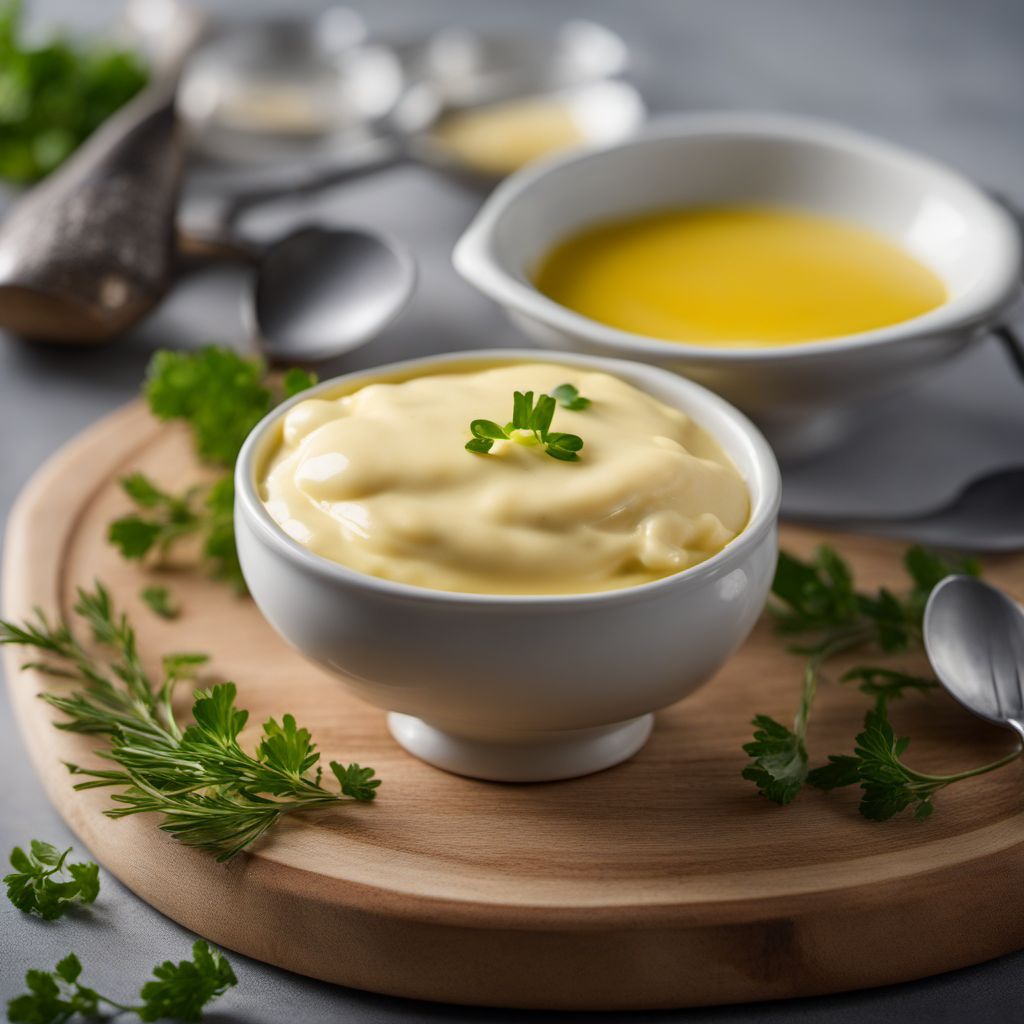
Ingredient
Hollandaise type sauce
"Velvety Elixir: Unveiling the Secrets of Hollandaise Type Sauce"
Hollandaise type sauce is a smooth and velvety emulsion made by combining egg yolks, melted butter, and lemon juice. It has a pale yellow color and a luxurious, silky texture. The sauce is known for its rich and buttery taste, with a tangy and slightly acidic note from the lemon juice. It has a delicate balance of flavors, making it a perfect accompaniment to a variety of dishes.
Origins and history
Hollandaise sauce originated in France and is believed to have been created in the 17th century. It is named after the Dutch, as it was inspired by a similar sauce called "sauce Isigny" from the Normandy region of France, which was influenced by Dutch cuisine. Hollandaise sauce gained popularity in French cuisine and has since become a staple in many culinary traditions around the world.
Nutritional information
Hollandaise type sauce is a calorie-dense sauce, with approximately 180 calories per 2-ounce serving. It is a good source of vitamins A, D, and E, as well as essential fatty acids.
Allergens
Hollandaise type sauce contains allergens such as eggs and dairy.
How to select
When selecting Hollandaise type sauce, look for a brand that uses high-quality ingredients and avoids artificial additives. Check the expiration date and ensure that the packaging is intact.
Storage recommendations
Store Hollandaise type sauce in an airtight container in the refrigerator for up to 3 days. Reheat gently over low heat, stirring constantly, to prevent curdling.
How to produce
To make Hollandaise type sauce at home, whisk together egg yolks, lemon juice, and a pinch of salt in a heatproof bowl. Place the bowl over a pot of simmering water and gradually whisk in melted butter until the sauce thickens. Remove from heat and season with salt and pepper.
Preparation tips
When preparing Hollandaise type sauce, it is important to whisk the ingredients continuously to achieve a smooth and creamy texture. Be cautious not to overheat the sauce, as it can cause the emulsion to break. If the sauce becomes too thick, it can be thinned out with a little warm water or lemon juice.
Substitutions
A suitable substitute for Hollandaise type sauce is béarnaise sauce, which is made with similar ingredients but includes the addition of tarragon and shallots for a different flavor profile.
Culinary uses
Hollandaise type sauce is commonly used as a topping for eggs Benedict, steamed vegetables, grilled fish, and roasted meats. It can also be used as a base for other sauces or as a dip for artichokes and asparagus.
Availability
Hollandaise type sauce is widely available in grocery stores and supermarkets, both in pre-made jars and as a powdered mix.
More ingredients from this category
Recipes using Hollandaise type sauce

Moroccan-style Eggs Benedict
Savory Moroccan Twist: Eggs Benedict with a Spicy Harissa Hollandaise

Spanish-style Eggs Benedict
Huevos Benedictinos Españoles

Galician-style Huevos Hussarde
Santiago Sunrise: Galician-style Huevos Hussarde

Indo-style Eggs Benedict
Spiced Eggs Benedict with Curry Hollandaise

Bavarian Eggs Benedict
Bavarian Delight: Traditional Eggs Benedict with a Bavarian Twist

Brazilian-style Eggs Benedict
Tropical Twist Eggs Benedict

